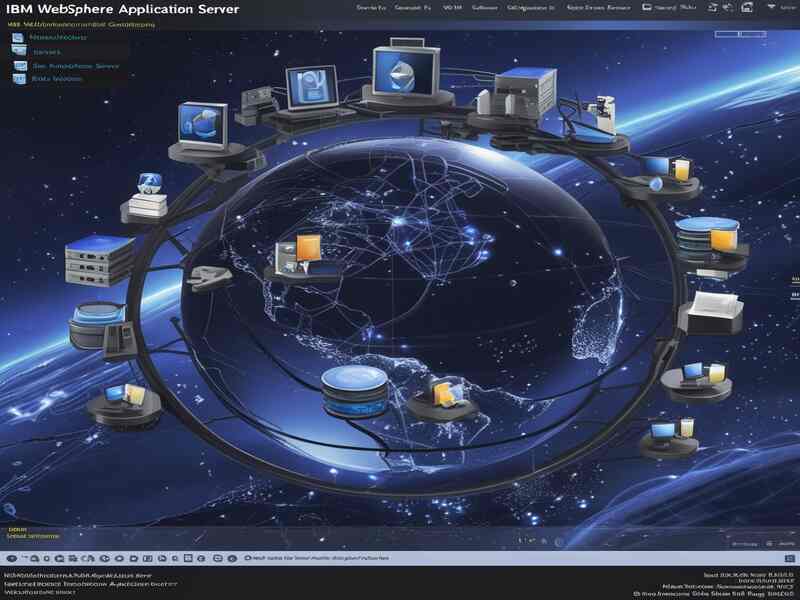IBM WebSphere Application Server Tutorial
Introduction on Servers
Servers are essential for providing services to clients and are responsible for the execution environment for client requests. They take requests from the client and execute them, or process the request and provide a response.
The server’s general mechanism is to take the request and process it, then respond to the client.An operating system is one of the servers that takes requests from users or clients who are using the application.
The server processes the request, gives a response, and responds to the client.The server’s operating system is one of the servers that takes the system from the user or client who is using the application.
Introduction on Web Server
In my understanding, web servers are used to display web content or web pages over the internet. Web servers display web content or web pages over the network.
Web servers are also used to manage the network traffic and ensure that the server is always available to the client. They can handle large volumes of data, such as large databases, and can handle multiple requests simultaneously.
When a user tries to access a specific application, such as Google, they type the application into their browser and the browser takes the necessary information.

The request goes to the web server first, as web servers can handle both HTTP and HTTP requests.
The web server has some advantages over other servers, such as handling web requests and HTTP requests. The web server has the client, which means it can handle requests from the client.
Advantages of a Web server
It identifies the request, which comes from the client and can be identified in two ways: static and dynamic.Static requests are those that cannot change the web or navigate the web pages.
They are not possible to change the web pages themselves, but they can be displayed by web servers. Web servers are responsible for displaying these static pages, as well as PDFfiles.
Dynamic requests, on the other hand, allow users to change or navigate the web pages over the internet.

They can change the content of the web pages, such as adding or removing content, or navigate the web pages over the network.It has the ability to display status codes.
These codes indicate whether the request is successful or not, and they are maintained by the server.
Another advantage of a web server is its ability to handle error messages, such as 404, 500, and other errors that may occur when accessing a web application through the internet.
One advantage of deployments is that only end users can access the application.For example, if an application is developed on a laptop and then moved to a web server, it will not be available for end users.
To make the application globalized, it must be installed on one of the servers. This means that only end users can access the application.

IBM WAS Training

What is IBM WebSphere Application Server?
IBM Web Sphere application server is a platform that offers a set of software’s developed by IBM that serves as a platform for running Java-based web applications.
It acts as a middleware layer between the operating system and the applications, providing the necessary infrastructure to deploy, manage, and scale enterprise-level applications.
Purpose of Application Server
The application server is responsible for managing the web server, which is responsible for managing the application server. The web server component is also involved in the application server, and the web container is involved in the application server.

The application server is responsible for managing the web server, which is responsible for managing the web server components.
How to deploy a Java Application?
It begins with installing the web sphere application server product.
Next step is to configure product files, the user must create a configuration file using the product files. The configuration file includes the name of the product.
Then there is a process of configuring and creating servers in a web applicationIt begins with the concept of configuration profile configuration, which is aa set of folders and files that allow users to create, modify, and manage applications.
These profiles are available in Web Sphere, and they contain different types of profiles such as DMGr, app server, custom profile, secure proxy, and sell management admin agent and job.
After configuration, the next step is system management. System includes various functions such as stop and start, backup restore, synchronization, and other activities. Each server has different purposes and is used for different purposes.
After deployment, applications should be connected to the server and database. This is done through concepts like JDBC Java database connectivity, JMS Java messaging, and JMS Java messaging services.
Clusters are created and managed by web spare application servers. These servers are used to retrieve and fetch data from databases, and JMS Java messaging services are provided.

IBM WAS Online Training

Here are some key aspects of IBM Web Sphere Application Server:
1. Application Hosting: It allows businesses to host and run web applications, services, and APIs. These applications can range from simple web apps to complex, distributed systems.
2. Java EE Support: WebSphere is built to support Java Platform, Enterprise Edition (Java EE), now known as Jakarta EE. This means it provides a robust environment for running Java-based applications that adhere to enterprise standards.
3. Scalability and Performance: It is designed to handle high traffic and large-scale applications, offering features like load balancing, clustering, and failover to ensure reliability and performance.
4. Security: WebSphere includes built-in security features such as authentication, authorization, and encryption to protect applications and data.
5. Integration: It integrates well with other IBM products and third-party systems, making it a good choice for enterprises that rely on a mix of technologies.
6. Management and Monitoring: WebSphere provides tools for managing and monitoring applications, making it easier for administrators to maintain system health and troubleshoot issues.
7. Flexibility: It supports a variety of deployment options, including on-premises, cloud, and hybrid environments, giving businesses flexibility in how they deploy their applications.

IBM WAS Course Price


Chaitanya
Author